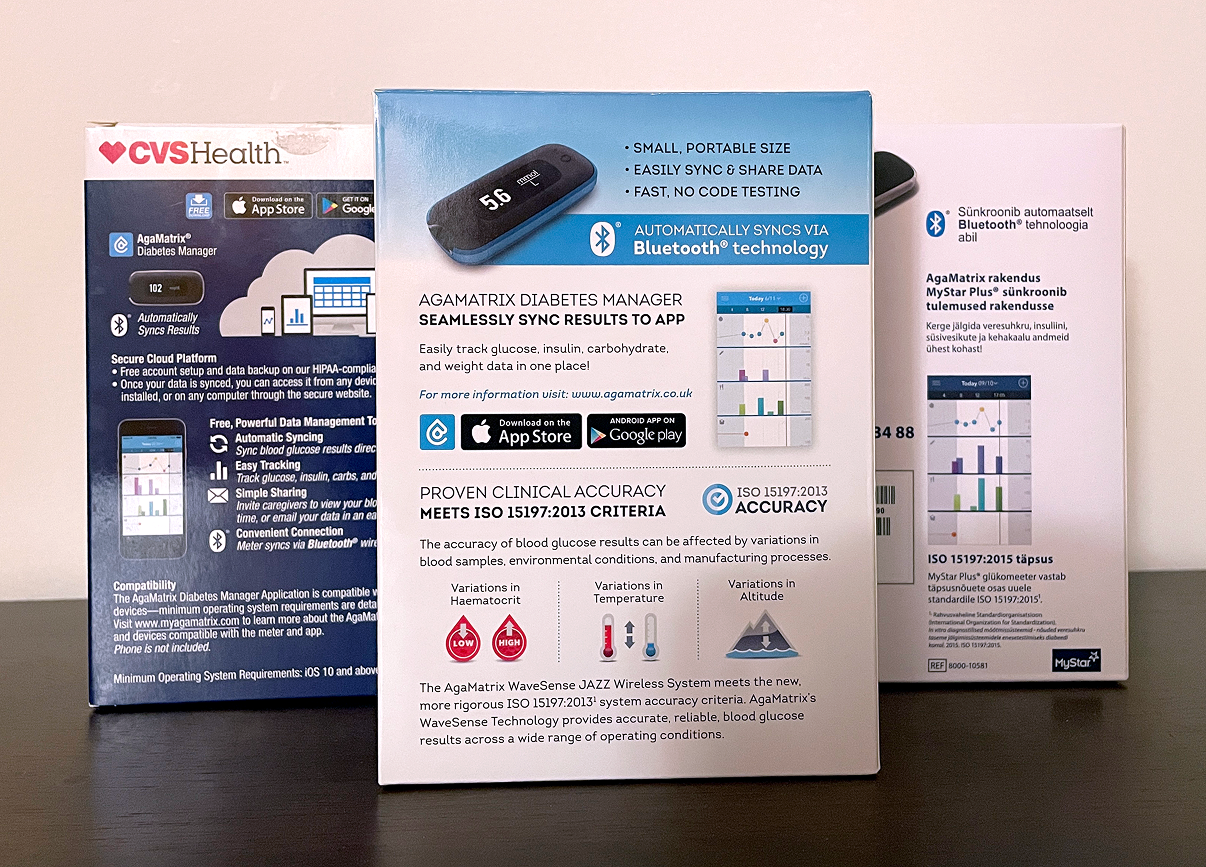Overview
The AgaMatrix Jazz Wireless 2 is a Bluetooth® enabled blood glucose monitor that automatically syncs with the AgaMatrix Diabetes Manager app.
The meter has a single button used to scroll through past readings and pair the meter with a smartphone. If the meter is paired with the supporting app, glucose results transfer automatically.
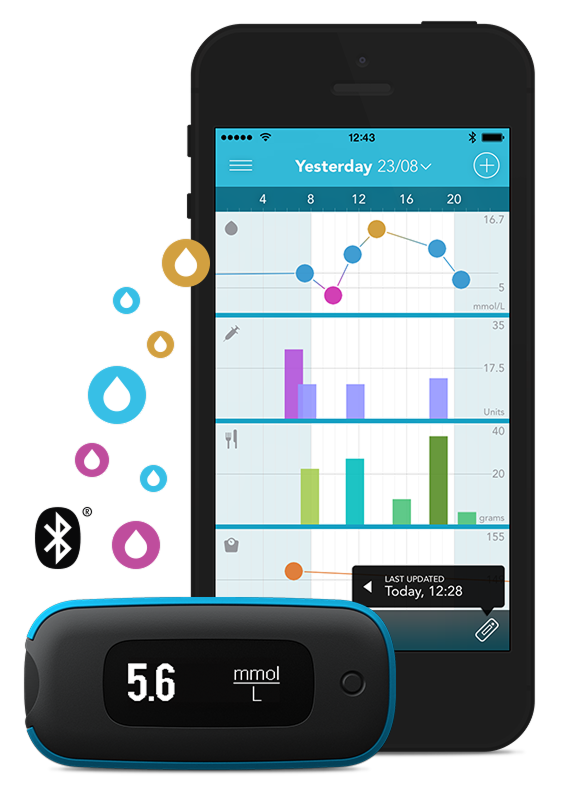
My role
For this project, I was involved from the beginning to the end for both the meter and the supporting app. That includes initial brainstorming, early sketches, design refinement, final asset creation, testing, and marketing materials.
UI design
I designed the interface for both the meter and the mobile app.
Prototypes
I built a prototype (HTML/CSS/JS) that was used for usability testing before committing to a final design.
Product renders
I used Blender to create photorealistic renders of the meter for use on product packaging and marketing collateral.
Design considerations
Small screen
The meter’s screen was 96×128 pixels, so we needed to condense a lot of information into a very small screen.
One button
The user needs to be able to turn on the meter, pair the meter with the app, scroll through readings, and turn off the meter, all with one button.
Multiple countries and languages
The meter would be available around the world, so we needed to limit the amount of text that needed to be translated.
Formative usability
We conducted multiple rounds of usability studies as we worked on the design of the meter and the app.
- I created an HTML/CSS/JavaScript prototype to test the meter functionality before we committed to any firmware or hardware. At this stage, the focus was on the display of information on the meter screen and testing if users understood how to use the meter’s single button.
- I used Flinto to link together screenshots that users could interact with on a mobile device. Meter connectivity was simulated using a timer to link to a new screenshot once “pairing” was complete. At this stage, the focus was the the pairing process in the app.
- Once the app was implemented and we had a functional meter, we tested the entire pairing process on the meter and the app.
The final design
Meter design
In order to make the most of the limited screen space, the left half of the screen displays the glucose reading and the right half of the screen displays scrolling information – glucose units, date, and time – that continuously cycles. That allowed us to display more information than would otherwise fit on the screen. Likewise, by limiting text to the glucose units (everything else is numeric), we were able to avoid translations on the meter.
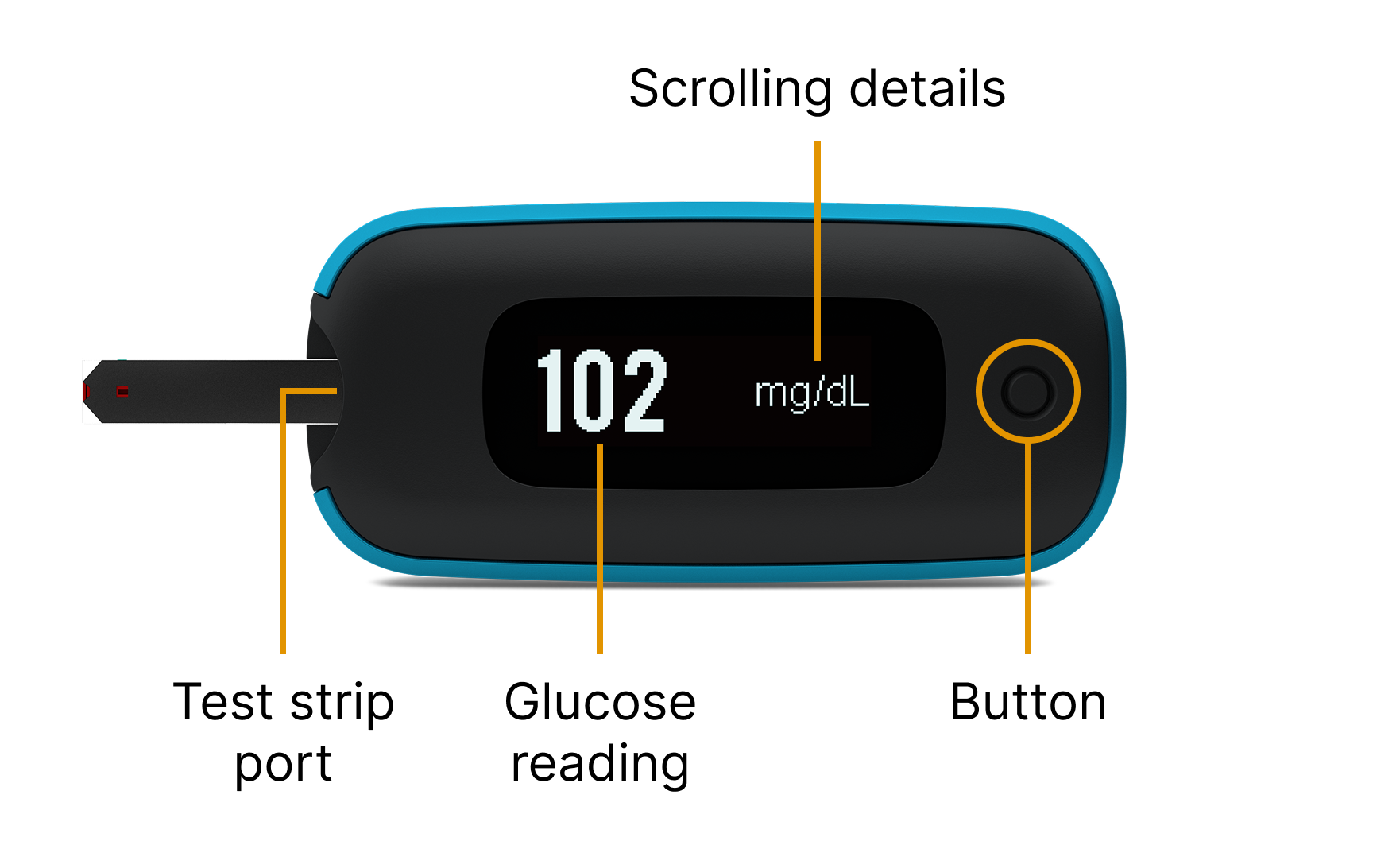
We made the most of the single button by supporting press as well as press/hold to enter different modes. Additionally, we made testing mode (i.e., meter is waiting for a blood drop) accessible only by inserting a test strip.
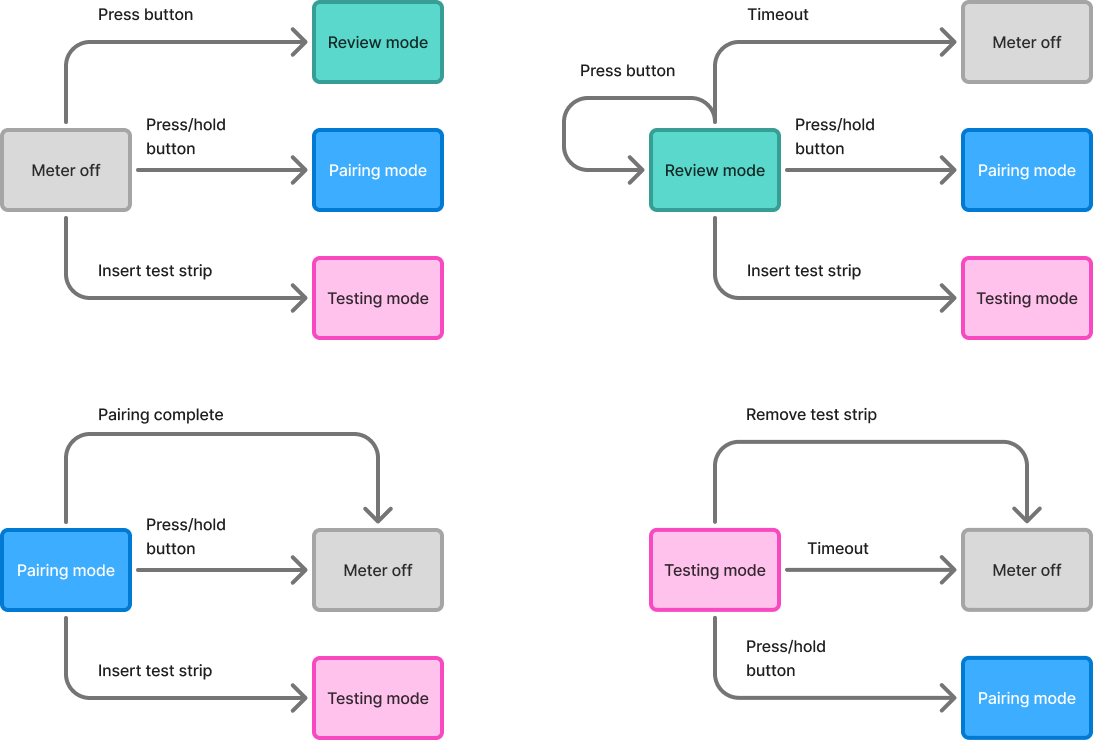
Initially, we wanted to have some tagging functionality performed directly on the meter but decided to move that entirely to the app to avoid complicating the meter interface.
App updates
The main app update was to add instructions for pairing the meter with the app. The pairing process involved pressing and holding the meter button and selecting the meter (by serial number). Once paired, readings taken on the blood glucose meter automatically transfer to the app.
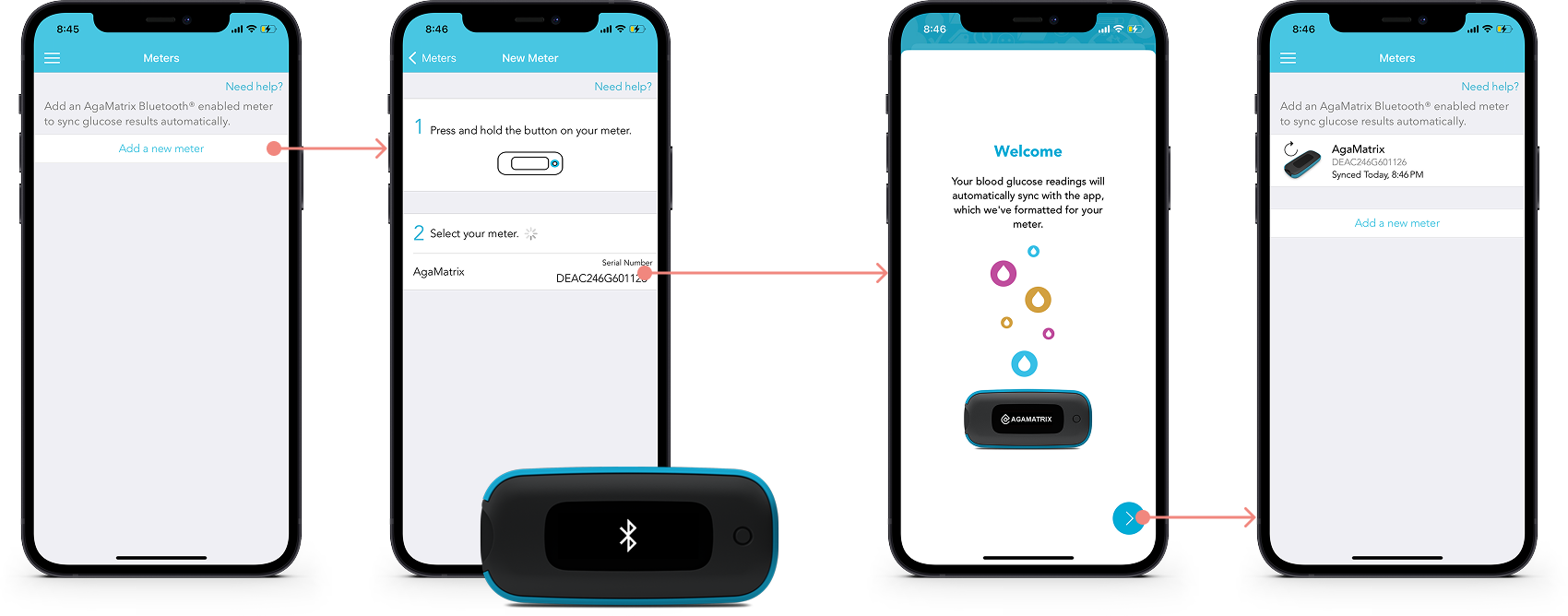
Outcome
The meter was sold under the name Jazz Wireless 2 as well as being white-labeled for companies such as CVS Health and Sanofi.
